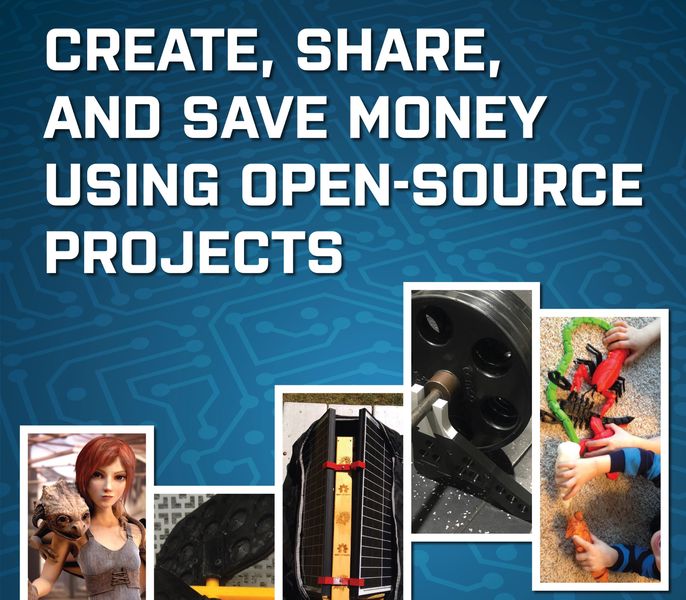
This week’s selection is “Create, Share, and Save Money Using Open-Source Projects” by Joshua Pearce.
Pearce is a Professor of Materials Science and Engineering at the University of Michigan, and has been working with 3D printing and related technologies for many years. A large portion of his research work focuses on the use of open source technologies, some of which he’s bundled into this book.
The short 158-page tome provides not only an introduction to open source, but also delves deeply into many potential areas of application.
His explanation to the principles of open source work begins with a bold statement on sharing. He says:
“Not only should you seek to share your work, you should do it aggressively, and share it as widely as possible. There are many valuable benefits to aggressively sharing your own work in the global open-source community. Let me tell you about four.”
If you’re doubtful of open source, perhaps Pearce’s explanations will help persuade you to its benefits. Pearce deals with the concept from not only technical terms, but also an ethical viewpoint.
Pearce explores a number of different areas where open source assets are present in today’s world. One chapter, for example, explores the nature of sharing images and videos. He discusses several sharing sites, and the open source licenses being used. There’s a table of the major providers and how many “CC0” licenses or equivalent may be present. It turns out that many of the big sites don’t really address the licensing properly.
Other areas of human expression, including art, music. fashion and writing are also examined. Books in particular pose an interesting question, as they are stored specifically in a number of “open source” repositories for public use. I was surprised to learn of a few very large repositories I hadn’t previously known.
Maps and GIS information is another very interesting topic covered by Pearce. These are often mash-ups of some type of data and maps or images to create new knowledge. Pearce explains how these are made and distributed in some detail.
Finally, the section of most interest to Fabbaloo readers will be the chapters on “Making”. Pearce begins by discussing “old-school” skills such as woodworking, but quickly moves on to more advanced techniques, including electronics, 3D printing and CNC machining.
To be honest, the section on 3D printing is relatively small and introductory, but that’s not why I recommend this book. Instead it’s the read through of the multitude of open source scenarios and methods that’s of most interest. By having a better understanding of them, a maker with a 3D printer would most certainly have more effective open source progress.
If you’re a maker and have interest in open source, this is an important book to read.
We’re an Amazon Associate and earn a small fee from qualifying purchases. Help support our 3D print news service by checking out this book!
Via Amazon
